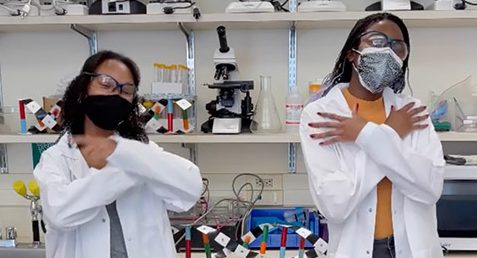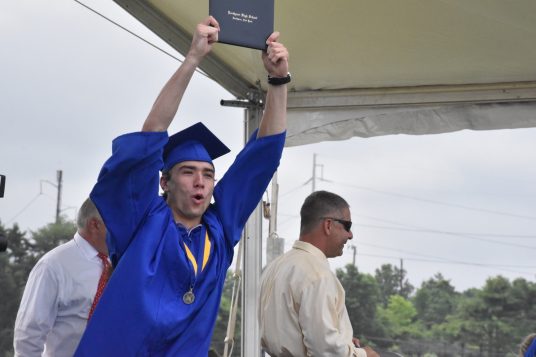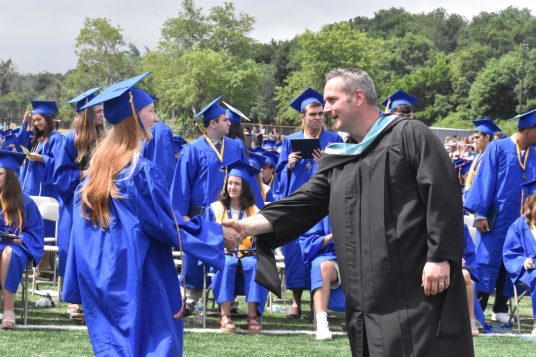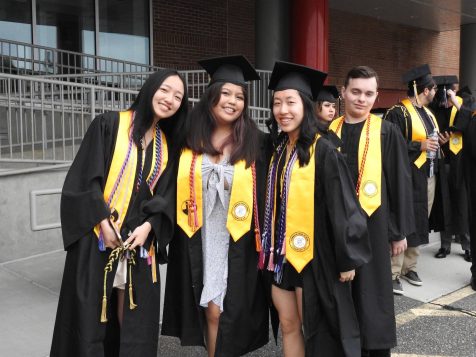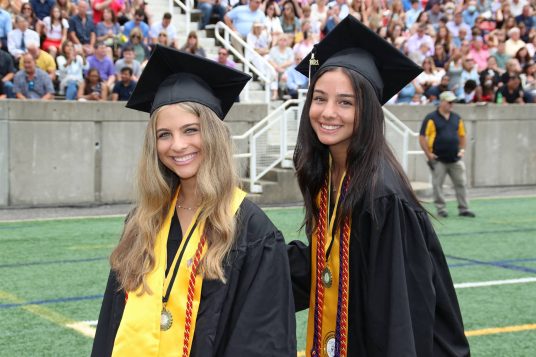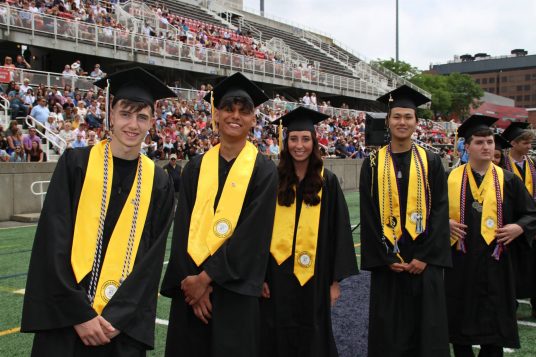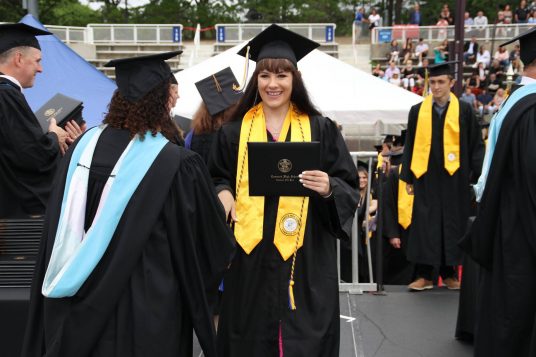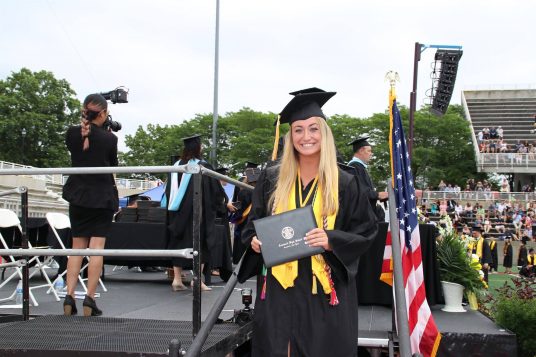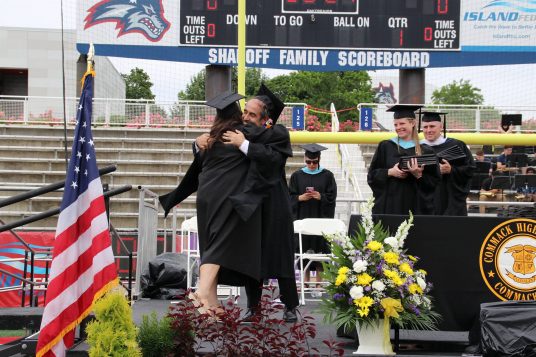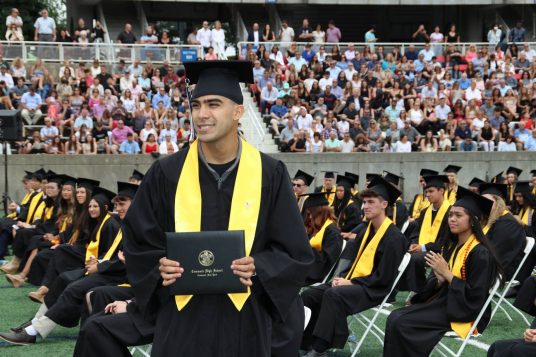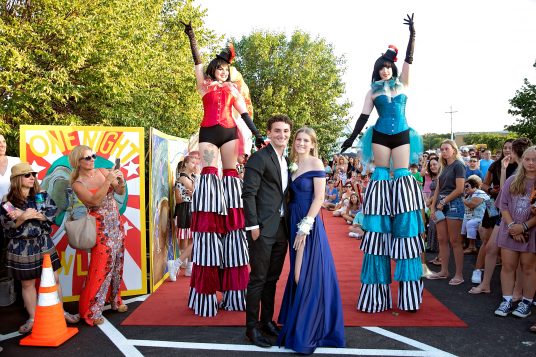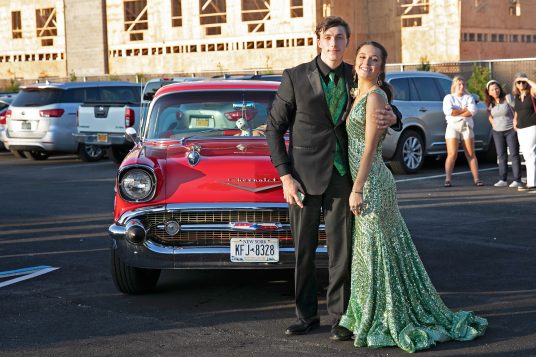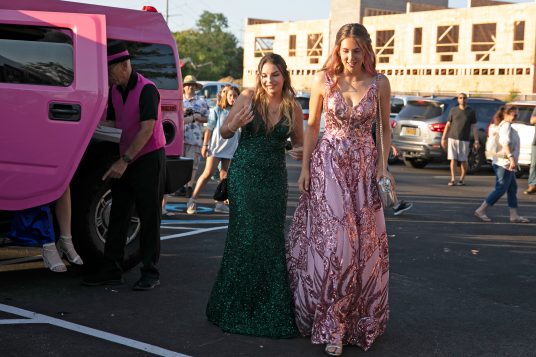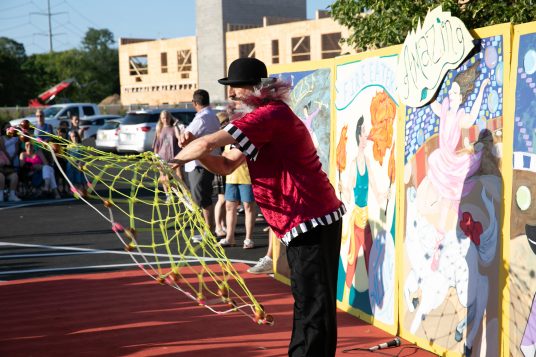The Mather House Museum reopens for the season on Saturday, July 3. The museum, located at 115 Prospect St., Port Jefferson, will be open on Saturdays and Sundays from noon to 4 p.m. through Oct. 10. Come see the new exhibit, Salute to Essential Workers, and visit the consignment shop loaded with treasures. A docent guided tour is available for the main museum and all of the complex buildings. Donation requested. For more information, call 631-473-2665.
Yearly Archives: 2021
Making Democracy Work: Judicial reform is needed in New York
By Lisa Scott
Americans (remember civics?) know that there is a third branch of government … the Judiciary. Unfortunately, most think of Judge Judy (and the myriad of similar TV judges) and Law and Order (and its spinoffs). If they are politically engaged, it’s the Supreme Court that is a focus. However, judges affect the majority of Americans much “closer to home” at some point in their lives: traffic, matrimonial, drug and alcohol, accidents, property. But there’s so little awareness of how judges are selected and the pressing need for court reform in New York State.
Because of the League of Women Voters’ nonpartisan principles and expertise with voter education, I was asked by County Executive Steve Bellone to moderate a four-hour judicial reform conference on June 8. Opening keynotes from Congressman Jerry Nadler (Chairman of the House Judiciary Committee) and Hon. Jeh Johnson (former U.S. Dept of Homeland Security Secretary, appointed Special Advisor on Equal Justice in the Courts by Chief Judge Janet DiFiore in 2020) set the stage for the three panels.
These focused on the history and experience of judicial selection; a robust discussion of judicial selection reform proposals, and a wide-ranging discussion of the challenges: court simplification, promoting diversity on the bench, and criminal justice and public confidence in state judiciary as well as methods to promote and ensure judicial independence and implications on criminal justice. (View the entire conference at https://www.facebook.com/SteveBellone/videos).
During the conference, Hon. Stuart Namm, former Suffolk County Judge, was given the Suffolk County Public Service Award by CE Bellone. Judge Namm’s experience culminating in 1985 with a letter to then-Gov. Mario Cuomo describing misconduct by the Suffolk County police and the district attorney’s office including possible perjury by prosecutors.
New York’s State Commission of Investigation followed up on Judge Namm’s charges, eventually filing a report (described as “blistering” by Newsday) condemning misconduct by police detectives and prosecutors. The Suffolk County police commissioner resigned soon afterward; the district attorney declined to run for re-election. A number of officers retired early or resigned. No one, however, was indicted. Denied renomination to his judgeship, Judge Namm was ostracized and moved to North Carolina.
Although “some who knew him wished he would stay quiet,” Namm’s 2014 “A Whistleblower’s Lament” details his experiences. He said “… in New York state, judges always have to be looking over their shoulders. So long as judges in trial courts are selected through the political process, things will never change.”
The LWV of NYS has been advocating for court reform since 1955, when there were about 1500 autonomous courts in the state. Some progress has been made since then, but there has been tremendous reluctance by the NYS Assembly and Senate and the Governor to fully address issues via legislation and appropriate budget support. Constitutional amendments are needed. We support measures to obtain a unified, statewide court system, and believe judges should be chosen on the bases of merit although with ultimate control of a major governmental institution resting with the people.
New York’s existing multiple court structure creates confusion for the people the justice system is supposed to serve. For many, and frequently in matters involving the safety of families and children, the scenario is this: different judges decide on different pieces of inter-related cases, as a result each judge has an incomplete story of a case causing individuals to receive multiple decisions and faulty resolution of their cases. As a result, all parties to a case have to make multiple appearances, along with any government agencies, attorneys and witnesses and have to repeat, again and again, the trauma that caused them to appear in court.
This not only wastes time for everyone, it is completely unfair and an unproductive way to provide justice, causes the loss of work and wages and perpetuates a system that is difficult, if not impossible, to understand, and hurts individuals and their families as they get caught up in systemic chaos. (To learn more, visit https://simplifynycourts.org/)
Lisa Scott is president of the League of Women Voters of Suffolk County, a nonprofit, nonpartisan organization that encourages the informed and active participation of citizens in government and influences public policy through education and advocacy. For more information, visit www.lwv-suffolkcounty.org, email [email protected] or call 631-862-6860.
Safety tips for July 4th weekend
The Suffolk County Volunteer Firefighters Burn Center at Stony Brook University Hospital — the only designated burn care facility in Suffolk County, has 10 safety tips this July 4th Weekend.
Many will spend the holiday in their backyards for barbecues, cookouts or build fire pits where there’s a greater risk to sustain a burn injury. To avoid injury, Steven Sandoval, MD, Associate Professor of Surgery and Medical Director of the Suffolk County Volunteer Firefighters Burn Center at Stony Brook University Hospital, says “The best way to do this is to prevent the burn in the first place with safety tips and precautions to eliminate potential dangers.”
✳ Fireworks are safe for viewing only when being used by professionals.
✳ Sparklers are one of the most common ways children become burned this holiday, even with a parent’s supervision.
✳ Do not have children around any fireworks, firepits, barbecues or hot coals. Teach them not to grab objects or play with items that can be hot. Go through a lesson where they learn to ask permission.
✳ Limit the use of flammable liquids to start your fire pits and barbecues. Use only approved lighter fluids that are meant for cooking purposes. No gasoline or kerosene.
✳ Don’t leave hot coals from fire pits and barbecues laying on the ground for people to step in.
✳ When cleaning grills, the use of wire bristle brushes can result in ingestion of sharp bristle pieces requiring surgery.
✳ If you are overly tired, and consumed alcohol, do not use the stovetop, fire pit or a fireplace.
✳ Stay protected from the sun. Use hats and sunblock, and realize that sunblock needs to be reapplied after swimming or after sweating.
✳ Use the back burners of the stove to prevent children from reaching up and touching hot pots and pans.
✳ Always use oven mitts or potholders to remove hot items from the stove or microwave. Assume pots, pans and dishware are hot.
“If burned do not go anywhere but a facility that specializes in burn treatment,” says Dr. Sandoval.
To reach the Suffolk County Volunteer Firefighters Burn Center at Stony Brook University Hospital, call 631-444-4545. For immediate help, call the burn unit directly at 631-444-BURN.
CSHL offers minority high school students a chance to question scientists
By Daniel Dunaief
Cold Spring Harbor Laboratory’s DNA Learning Center and the Red Cloud Indian School recently launched a program called Students Talk Science in which high school students could ask questions from several senior scientists about the vaccine for COVID-19 and healthcare disparities in minority communities.
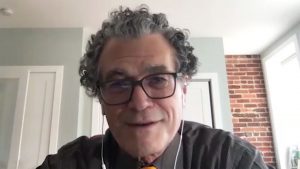
The talks are a component of a program called STARS, for Science, Technology & Research Scholars, an effort the group started in 2019 to build interest and experience in STEM for minority students. The Students Talk Science program engaged the STARS participants and students from the Red Cloud Indian School on the Pine Ridge Indian Reservation.
Jason Williams, Assistant Director of Inclusion and Research Readiness at the DNA Learning at CSHL; Brittany Johnson, an educator at the DNA Learning Center; Katie Montez, a teacher at the Red Cloud Indian School ;and Carol Carter, Professor in the Department of Microbiology and Immunology at the Renaissance School of Medicine at Stony Brook University, wanted to connect minority students with practicing physicians and scientists in leadership positions at the National Institutes of Health to allow them to ask questions of concern regarding the vaccines.
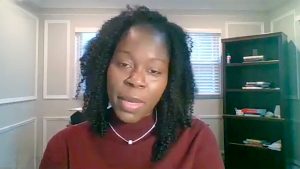
“We did this to empower them to function as trusted resources for their families, friends and network,” Carter, who participated as an individual rather than as a formal representative of Stony Brook University, explained in an email.
The conversations included interactions with Dr. Eliseo Pérez-Stable, Director of the National Institute on Minority Health and Health Disparities, or NIMHD at the National Institutes of Health; Dr. Monica Webb Hooper, Deputy Director of the NIMHD; Dr. Gary Gibbons, Director of the National Heat, Lung and Blood Institute; and Dr. Eugenia South, Assistant Professor in Emergency Medicine at the Hospital of the University of Pennsylvania and the Presbyterian Medical Center of Philadelphia.
The high school students prepared informed questions.

“The students were encouraged to do their own research” on the interview subjects, Williams explained. “We asked students not to look just at [each] interviewee’s science work, but also any personal background/ biography they could find. Students had multiple opportunities for follow up and were largely independent on their choices of questions.”
Samantha Gonzalez, a student at Walter G. O’Connell Copiague High School, asked South about her initial skepticism for the vaccine.
South acknowledged that she had no interest in taking the vaccine when she first learned she was eligible. “I almost surprised myself with the fierceness with which I said, ‘No,’” South said. “I had to step back and say, ‘Why did I have this reaction?’”
Some of the reasons had to do with mistrust, which includes her own experiences and the experiences of her patients, whom she said have had to confront racism in health care. In addition, she was unsure of the speed at which the vaccine was developed. She had never heard of the mRNA technology that made the vaccines from Moderna and Pfizer/ BioNTech possible.
“I had to do my own research to understand that this wasn’t a new technology,” she said.

South went through a learning process, in which she read information and talked to experts. After she received answers to her questions and with the urging of her mother, she decided to get the vaccine.
“I’m so thankful that I was able to do that,” South said.
The team behind Students Talk Science not only wanted to empower students to make informed decisions, but also wanted to give them the opportunity to interact with scientists who might serve as personal and professional role models, providing a pathway of information and access that developed amid an extraordinary period.
“We wanted to engage high school students in something unique going on in their lifetime,” Carter said.
To be sure, Carter and Williams said the scientific interactions weren’t designed to convince students to take the vaccine or to urge their parents or families to get a shot. Rather, they wanted to provide an opportunity for students to ask questions and gather information.
“We purposely did not participate in the discussions because our goal was not to convince or ‘preach,’ but to enable students and their networks to make informed decisions,” Carter said.
Parents had to read and sign off on the process for students to participate. The organizers didn’t want a situation where they were doing something that conflicts with a parents’ decisions or views.
Williams added that the purpose of the conversations was never to say, “you must get the vaccine. Our purpose is to talk about information.”
The objective of these interactions is to help minority students find a track for a productive career in ten years.
In addition to questions about hesitancy, Williams said some of the high school students expressed concerns about access to vaccines. He is pleased with the result of this effort to connect students with scientists and doctors.
The group was “able to get some of the most important scientists in the country to sit with high school students,” he said. “It was very powerful to give students access to these role models.”
The goal is to stay with these students, mentor them and stay in touch with them until they graduate from college and, perhaps, return as research scientists.
Even for students who do not return, this type of interaction could provide an “impactful experience that prepares them for other opportunities,” Williams explained, adding that the STARS program would incorporate the Students Talk Science Series into the program more formally in the future, with new students and topics most likely during the school year.
The interviews are available at the following website: https://dnalc.cshl.edu/resources/students-talk-science/.
Life Lines: Why I write a lot of books
By Elof Axel Carlson
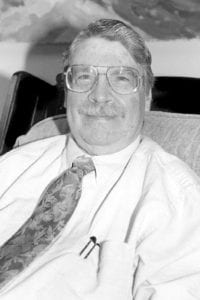
I have had 15 published books and my 16th came out in April of this year. I have at least ten other books that are either near completion or could be completed within a year.
Why do I have so many unpublished books? I committed myself to a career in science as an undergraduate and graduate student. I got my PhD with Nobelist H. J. Muller and admired the way he used his talents. He was committed to doing research and teaching about his major interest in “mutation and the gene.” He spoke out against abuses by science (racism, and indifference to health effect many of industries applications of science to commerce health, or the military).
I also learned, as I began to teach, that teaching was enjoyable and I began constructing my life like an insect undergoing a sequence of metamorphoses. I first focused on my research and got grants and published in professional journals. Then I shifted to teaching because I learned of the discontents of the 1960s that changed my students lives. Some were beaten by police when they demonstrated. Some had Peace Corps experiences. Many of the issues (sexism, bigotry, racism, aggression, mental health, environmental degradation) were tied to science and I began developing ways to teach biology to non science majors as a way to reach large numbers of students and give them a course that helped them make decisions about their own and their families’ lives.

I also wrote books, mostly scholarly books, and got those published. I participated in and helped create new educational programs and served as the founding Master of the Honors College at Stony Brook University. I also had a large family with five children and later my mother-in-law to join my household.
This led to a technique that I call “using snippets of time.” I learned to write whenever waiting for appointments or office hours if no one showed up and to put books in progress aside when other commitments had priority.
Also, I used writing to explore new ways to write. I wrote four novels. I wrote four different ways to do a memoir or an autobiography. I explored how the personal essay could be used to educate people reading a column I wrote for social newspapers. I also wrote, after I moved to Bloomington, Indiana, to present chapters at a “Life Writing” seminar held at Indiana University’s Emeriti House for retired faculty and staff and alums.
I plan to write a one-page blurb for each of my unpublished books. I will explore putting them on line as e-books or print on demand books. For me writing is fun. Just as I learned when I was teaching and preparing lectures, I have learned by writing that each book helps overcome a science indifference as well as science illiteracy in a world that I feel needs more science in evaluating the controversies of our generation.
Elof Axel Carlson is a distinguished teaching professor emeritus in the Department of Biochemistry and Cell Biology at Stony Brook University.
Northport Tigers ready to take on the future
The Northport High School class of 2021 celebrated their graduation on Saturday, June 26, alongside their peers and families at Tiger Stadium. Seniors gathered to be recognized for their accomplishments and receive their diplomas following four years of hard work.
Principal Daniel Danbusky reflected on the unique circumstances that students were working under this year and emphasized that he hopes this experience will teach students about how to rethink what they have learned and adapt to the situations that lie in front of them.
“As we have moved through the last four years, I hope your dreams have been realized and have come alive,” Danbusky said. “As you leave us, I charge you to find problems that need to be solved, rethink their solutions and allow pursuit to help shape you as you mature.”
Salutatorian Griffin Crafa and valedictorian Ian Kaish spoke to their classmates as well, providing words of encouragement and reflection, both on their time at Northport High School and looking ahead into the future.
“The unknown can be terrifying, but it can also be exhilarating,” Kaish said. “We have learned this from our time in Northport High School.”
He added, “It’s very easy to get caught up in wanting to succeed, but the only real way to succeed is by learning to embrace the journey and discovery.”
Performances by the Northport High School choir ensued as students tossed their caps to commemorate their last moments as high schoolers and celebrated the beginning of their next chapter.
UPDATED: Man stabbed at Blydenburgh park
On June 30, Suffolk County Police arrested a man after he stabbed another man at Blydenburgh County Park in Smithtown. The stabbing occurred June 30 at approximately 2:35 p.m.
Brian O’Connor allegedly got into an argument and physical altercation with another man at a camp ground at the park. O’Connor went into his vehicle, allegedly retrieved a knife and stabbed the 60-year-old victim. The victim was transported to Stony Brook University Hospital with non-life-threatening injuries.
Fourth Squad detectives charged O’Connor, 62, of Middle Island, with Assault 2nd Degree. He was scheduled to be arraigned at First District Court in Central Islip on July 1.
UPDATED July 1 to reflect arrest.
Commack Cougars travel to graduate
Commack seniors and their families headed to the Kenneth P. LaValle Stadium Stadium at Stony Brook University June 25 for their graduation ceremony.
The Commack School District left words of advice for the graduates on the district’s. website.
“Take advantage of all the opportunities that life presents you; push yourself out of your comfort zone every once in awhile; continue to surround yourself with a strong support system while never hesitating to lift others up when they need it; and be sure to utilize these very important words every single day — please, thank you, and I’m sorry. Stay curious, stay humble, stay grounded, and most importantly — stay true to yourself!”
Suffolk correction officer from Port Jeff Station dies in car accident
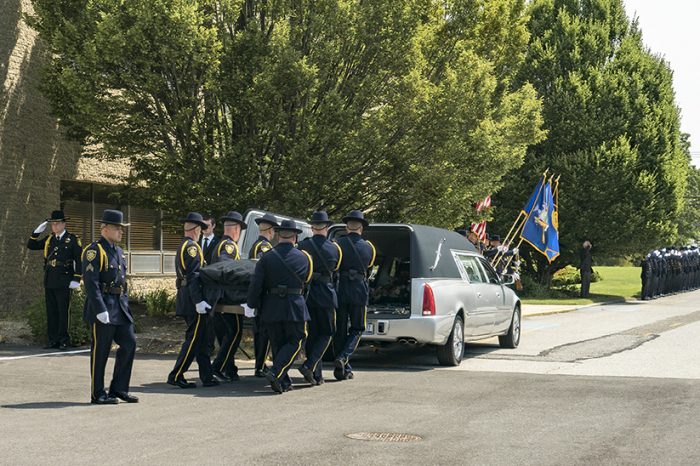
The Suffolk County Sheriff’s Office is mourning the loss of one of its own.
On Wednesday, June 23, Candice Ogiejko, of Port Jefferson Station, was killed in a car accident while driving in Yaphank just before 9 p.m.
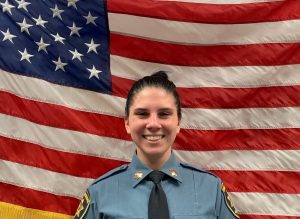
As one of the departments newest members, the 25-year-old had just completed her second year on the force, working in the Riverhead Correctional Facility.
“The entire staff of the Sheriff’s Office is mourning the loss of correction officer Candice Ogiejko,” said Sheriff Errol Toulon Jr. (D). “Correction officer Ogiejko was just 25 years old and had her entire life and career ahead of her. She will be greatly missed by her loving family, as well as her extended family in law enforcement.”
According to Suffolk County police, Ogiejko was driving a 2019 Dodge Ram northbound on County Road 101, when the vehicle veered toward the center grass median.
When the driver overcorrected, she lost control of the vehicle, which skidded across the lanes and crashed into the northeast corner of Old Dock Road. The vehicle struck curbing, fencing and several large trees before eventually coming to a stop down an embankment near a parking lot, at approximately 8:40 p.m.
She was pronounced dead at the scene.
Suffolk County Executive Steve Bellone (D) expressed his condolences on his Facebook page.
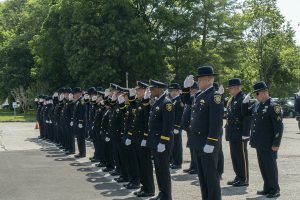
Photo from the Suffolk County Sheriff’s office
“On behalf of all of the residents of Suffolk County, our thoughts and prayers are with the friends and family of correction officer Candice Ogiejko,” he wrote.
On Sunday, June 27, a wake was held at Moloney’s Port Jefferson Station Funeral Home. A funeral Mass was held on Monday at St. Gerard Majella R.C. Church, with the burial at Holy Sepulchre Cemetery in Coram.
Members of the Sheriff’s Office lined up in Class A dress uniforms to bid farewell to Ogiejko outside of the church. The Sheriff’s Office Honor Guard served as pallbearers as taps was played on a bugle.
Port Jeff prom tradition finally makes a comeback
The high school prom — a tradition that has been alive for over 55 years — has finally made a comeback after a difficult year of dealing with the pandemic.
Parents of the Port Jefferson Prom Planning Committee have spent months trying to configure an ideal prom for the students in spite of the continually changing COVID-19 guidelines New York was enforcing.
Although the prom took place at The Meadow Club in Port Jefferson Station rather than at the high school, the committee was still able to go above and beyond while staying consistent with their selected carnival theme.
“I feel like this has been a bright light at the end of a long tunnel, and to be able to give the kids and the community a chance to get together to make this happen has just been a gift,” said Kim Muffly, a member of the prom planning committee. “It really has been an incredible experience.”
Since 1958, Port Jefferson has held their prom at the high school and has been fully orchestrated by the parents who rely on funding from donors and sponsors, as well as countless volunteer hours.
Each year the prom has a different theme, each one lavishly decorated by the parents to make the students feel fully immersed in their prom experience. The first prom in 1958 was themed “April in Paris” and this year the committee decided on a carnival theme.
Stilt walkers, tarot card readers, jugglers, contortionists, caricature artists, clowns, carnival games, and smokey Moroccan-themed areas with couches were set up inside, and outside the venue. All topped off with a striped carnival tent to make students feel as if they were really at the circus.
“I tried to think of a theme that would be a little more flexible because we weren’t sure what the COVID restrictions would be like,” Muffly said. “No matter where we had the prom we could keep the carnival theme, even if it was outside in the football field.”
Since a fire damaged in The Meadow Club banquet hall in 2018, inevitably shutting the building down for a few years, the venue has since revamped its space with brand new reconstruction and an elegant design.
According to Kiran Wadhwa, owner of the Meadow Club, the senior prom is just one of a few recent events the venue has taken pleasure in working with. The members of the Port Jefferson prom planning committee and the students were extremely grateful for the venue’s support and welcoming atmosphere.
“I don’t think I realized what a big deal this was until guests just kept coming up to me consistently saying thank you, thank you, thank you,” Wadhwa said. “I thought it was such a beautiful thing to see how the community really comes together.”





